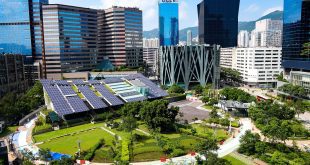Driving home after work during the second week of March, the setting sun was spectacular: a molten, pink-red globe, its colours intensified by a thick shroud of smog. ‘There is a price to pay for skies that look like this,’ I couldn’t help but think. I had seen a similar sunset over 10 years before, in South Africa, when a spate of brutal forest fires had ravaged the mountains encircling Cape Town. In that instance, payment was made in the form of a massive loss of plant and animal life, as well as a number of houses that met a fiery demise at the tongues of the inferno. This time, public health paid the price.
In a blissfully air-conditioned office at the Unit for Social and Environmental Research in Chiang Mai, researcher Po Garden pulls up the official NASA Earth Observatory site (http://earthobservatory.nasa.gov/), clicking on a aerial photograph of South East Asia taken by the Moderate Resolution Imaging Spectroradiometer (MODIS) on Nasa’s Aqua satellite. With the image blown up to full size, I can see a myriad of tiny red dots marking the locations of agricultural and forest fires. Burma is ablaze: like flesh bleeding from a multiplicity of pin pricks, flames rage across the country, so concentrated in some areas that the crimson dots blur into violent smudges. The burn sites, known as ‘hot spots’, become less savagely dense outside the borders of the military-controlled state, though Laos and Northern Thailand are also generously smattered with red. While annual burning practices and forest fires have caused hot season smog in Northern Thailand for centuries, the situation has worsened significantly in recent years, compounded by toxic vehicle emissions and dust from industry and construction. Further exacerbated by unusual weather conditions, including the lack of rain and a cold air mass that prevented dust particles from dissipating into the atmsophere, this year’s burning resulted in Thailand’s worst airborne crisis to date.
During the first two weeks of March, air pollution levels in Chiang Mai and the surrounding regions rose steadily above the safety limit; produced an eye-stinging, throat-burning, yellow-tinged haze that cut visibility down to less than 1000 metres. A profusion of minute dust particles, measuring less than 10 microns in diameter and known as PM10, pervaded the atmosphere, reaching a peak on March 14th at 383 µg/m3 (microgrammes per cubic metre) – over three times the acceptable safety ceiling of 120 µg/m3 – eventually prompting authorities to issue warnings against outdoor exercise and to declare the worst affected Chiang Mai districts, Chai Prakan and Phrao, haze disaster areas.
More: continued here
 Alternative Energy HQ solar power for homes, wind energy, and bio fuel issues
Alternative Energy HQ solar power for homes, wind energy, and bio fuel issues







